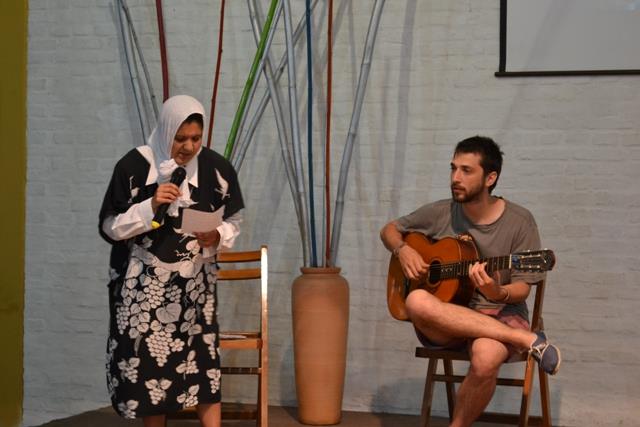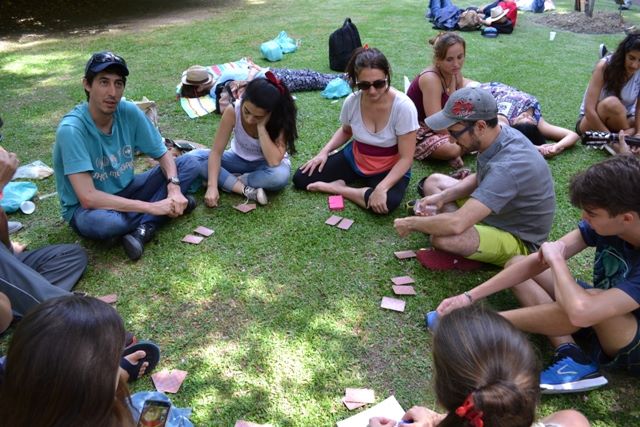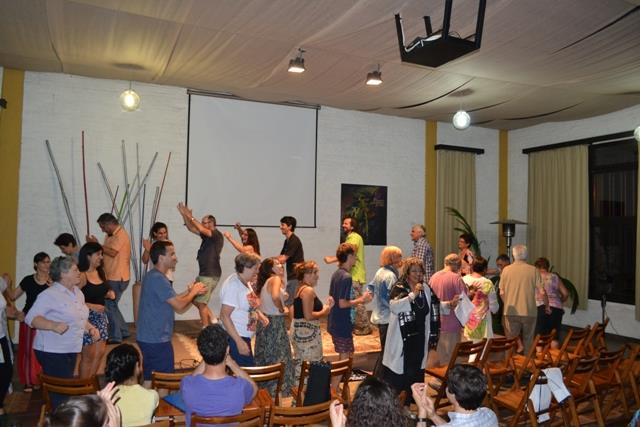
Watch
Art and the Ideal of the United World: Two Inseparable Pillars

Latin American artists of different ages and disciplines gathered in Uruguay to pursue a path that aims to deepen the Latin American identity and the ability to interconnect the art and the ideal of the united world in an intrinsic way.
Flor, 22, is an actress and tango dancer. The characters she plays hide a profound person who is eager to live her life fully. Martín, 25, bass player, is a nice, creative musician who is always looking for meaning in his life. Clari is 24 years old, she sings, she plays guitar, piano, and all that can produce chords, like her own life.
The three of them have taken part, January 28 through February 2, i.e. during the South American summer, in the meeting “Hacer de las heridas, obras de arte” (Turning wounds into works of art) that, in the city of Montevideo, brought together 44 artists from Uruguay, Argentina, and Bolivia.
This event for artists began some years ago in the Argentine regions of Catamarca, Mendoza, and Paranà, where the culture of the original populations of Latin America can be experienced more deeply. The goal was taking as a point of departure the origins of the Amerindian people, in order to reach the present.
This last meeting took place in Uruguay, where the Latin American perspective was further expanded, adding other points of view.

This “annual festival” involves artists from all areas: musicians, dancers, artists of plastic arts, actors, writers, poets, and storytellers. And, in their very words, they all start by following a specific discipline but they end up perceiving all disciplines as their own, as Flor, the tango actress and dancer explains:
“The fact of sharing our work and the work of other artists is a real a genuine gift, it is like contemplating a precious stone in the artistic work of others, because in that work they embody their soul, their history, and everything that makes up the artist’s life.”
This is obviously a general feeling, because Clari, the musician, says: “You eventually learn to see other artists’ works with deeper eyes, beyond the shortcomings you may have vis-à-vis another discipline’s language. You can look at those works in a different way, with much love.”
It is interesting to note that although everyone shares his or her own form of art, everyone is able to maintain their own language: musicians with their instruments, singers with their songs, actors with their gestures and words. Flor explains: “By entering in dialogue we can get in touch with our deepest suffering and joy and with those of others, both at a personal and social level. The horizon that opens up is very broad and for this it requires a deep emptiness.”

Martín, the bass player, highlights one of the key elements of the meeting: “All the themes dealt with go thoroughly into the problems that challenge us as artists. Thus, by living the experience of uniting art with the ideal of the united world, two pillars of my life come together. You never disassociate them, but when you hold them in your hands you feel that together they touch the right key, because they deal with what challenges you, with what you feel, and nothing is alien to you.”
When asked about what they take away from the meeting, the three young artists, without knowing the others’ answers, coincide in replying: the relationships among them.
Clari’s answer was this: “I take away many deep relationships and the desire to continue in the art world.” Flor sums it up by saying: “I take away real brothers and sisters,” and she adds that, on a cultural level, we are dealing more and more with a Latin American approach: “I bring home the affection and respect for the sister culture.” Martín expresses the same concept with other words: “The experiences and the themes are beautiful thanks to cohabitation. You are aware that now you are traveling this path together with other men and women who, like you, try to live the ideal of the united world in art.”



